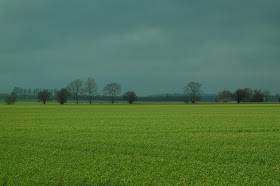 There are many early signs of spring after this mild month of February. The marsh harrier has arrived, the white-tailed eagle has started nesting, the skylark is singing, reports have come about the first cranes. There are numbers of snowdrops and eranthis in the garden and the first crocus are on their way up. If the mild weather continues it won't last long before the brimstone butterfly is here. The bumble-bee queen will soon wake up. There is nothing as fine as the sound of the first bumblebee.
There are many early signs of spring after this mild month of February. The marsh harrier has arrived, the white-tailed eagle has started nesting, the skylark is singing, reports have come about the first cranes. There are numbers of snowdrops and eranthis in the garden and the first crocus are on their way up. If the mild weather continues it won't last long before the brimstone butterfly is here. The bumble-bee queen will soon wake up. There is nothing as fine as the sound of the first bumblebee.
G
One of the first signs of spring are the flowers of hazel.
General and usual signs of spring:

Sweet violet is one of the first flowers in March. The dark violet flower has a wonderful scent and the colour is easy to spot by hedges and glades. It is also called "Mary and the child". If the petals are plucked, a figure is seen, looking like Virgin Mary with Child Jesus.
Lesser celandine is one of our earliest spring plants. The flower has shining yellow petals, and the plant is often called buttercup. Lesser celandine belong to the family Ranunculus like the anemone.
When you see coltsfoot it is a certain sign of spring. Back in school our teacher told us that when we saw the first coltsfoot then it was really spring and we had to bring it to her. Coltsfoot is seen in road banks, edge of ditches and lakeshores. The leaves have a contour like a little horse hoof.
 As soon as the sun brings warmth to a sheltered place, the ant comes out - and the ants clump together upon the anthill. They function like mobile radiators, and they bring warmth down in the hill to the queens.
As soon as the sun brings warmth to a sheltered place, the ant comes out - and the ants clump together upon the anthill. They function like mobile radiators, and they bring warmth down in the hill to the queens.The brimstone butterfly is another certain sign of spring. The male with the magnificent lemon-yellow colour is easy to spot in March. The white-yellow female arrives about two weeks later. The brimstone roams far and wide.
The orange-red butterfly, the small tortoiseshell, leaves its overwintering place in April. It is often seen with outspread wings in the warm sun. The small tortoiseshell is Denmark's national butterfly.
In late March and first of April the frog eggs are seen in little lakes and waterholes, the eggs are small transparent lumps with a little black spot in the middle. The frog is fully developed in 85 days, but already after four days it is possible to notice that the black spot has changed.
 And then there is the sweet little ladybird. We put it on our forefinger and let it crawl up, and we tell this little red thing to fly up to God and ask for good weather - and it flies up! The ladybird is also very helpful in the garden, fighting the little green mites.
And then there is the sweet little ladybird. We put it on our forefinger and let it crawl up, and we tell this little red thing to fly up to God and ask for good weather - and it flies up! The ladybird is also very helpful in the garden, fighting the little green mites.
The beautiful sight of the white anemone in the forest floor is magic. The flowers cover the earth before the trees have leaves. This happens in April-May - and when the beech after this beautiful sight shows us another miracle with the new incredible light-green leaves, then it is spring for good.
Nature is magic.  |
| May |
photo: grethe bachmann
A short Tour out on 22 February.
At the end of February 2014 we'll say goodbye to the fifth mildest winter in 140 years.
On Saturday 22 February we went to the east coast of Jutland south of Århus . The weather report had told us that there would be some after effects from the recent storm in the British Isles. The weather was very windy, but also warm and with rainy showers and sunshine, changing all the time. Big black clouds came rushing, followed by rain and a blue sky.
Here is a little collection of my photos from 22 February:
 |
| Black buzzard |
 |
| Brown buzzard. |
 |
| repair after storm in October. |

















